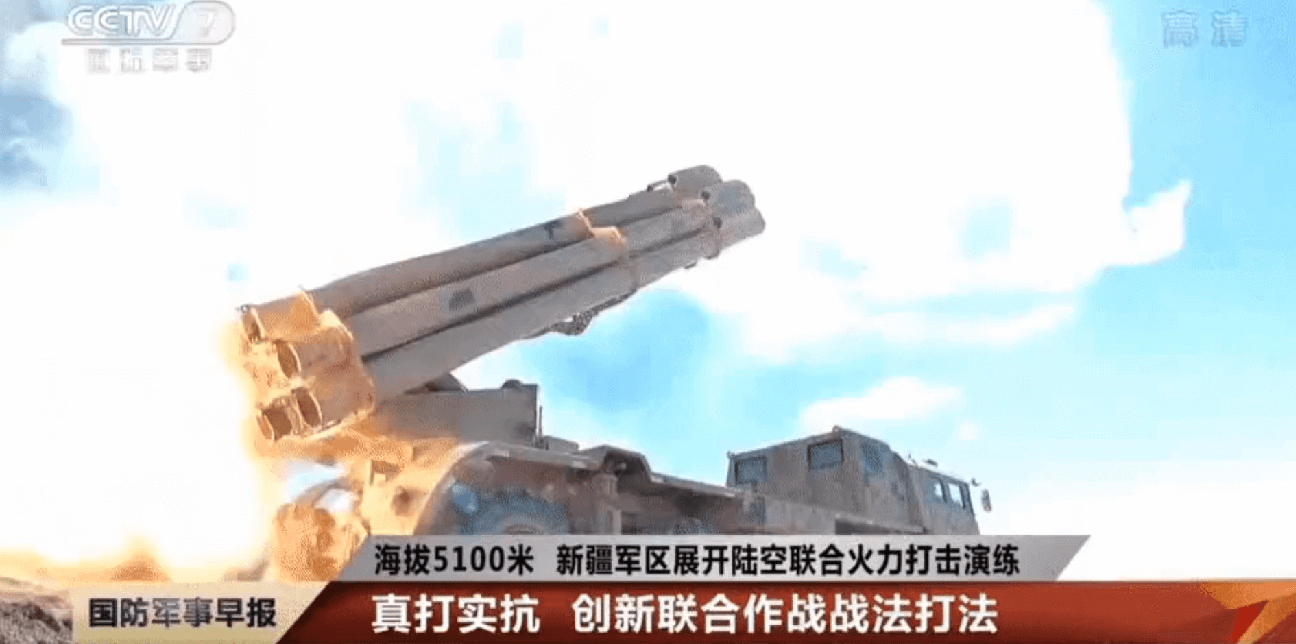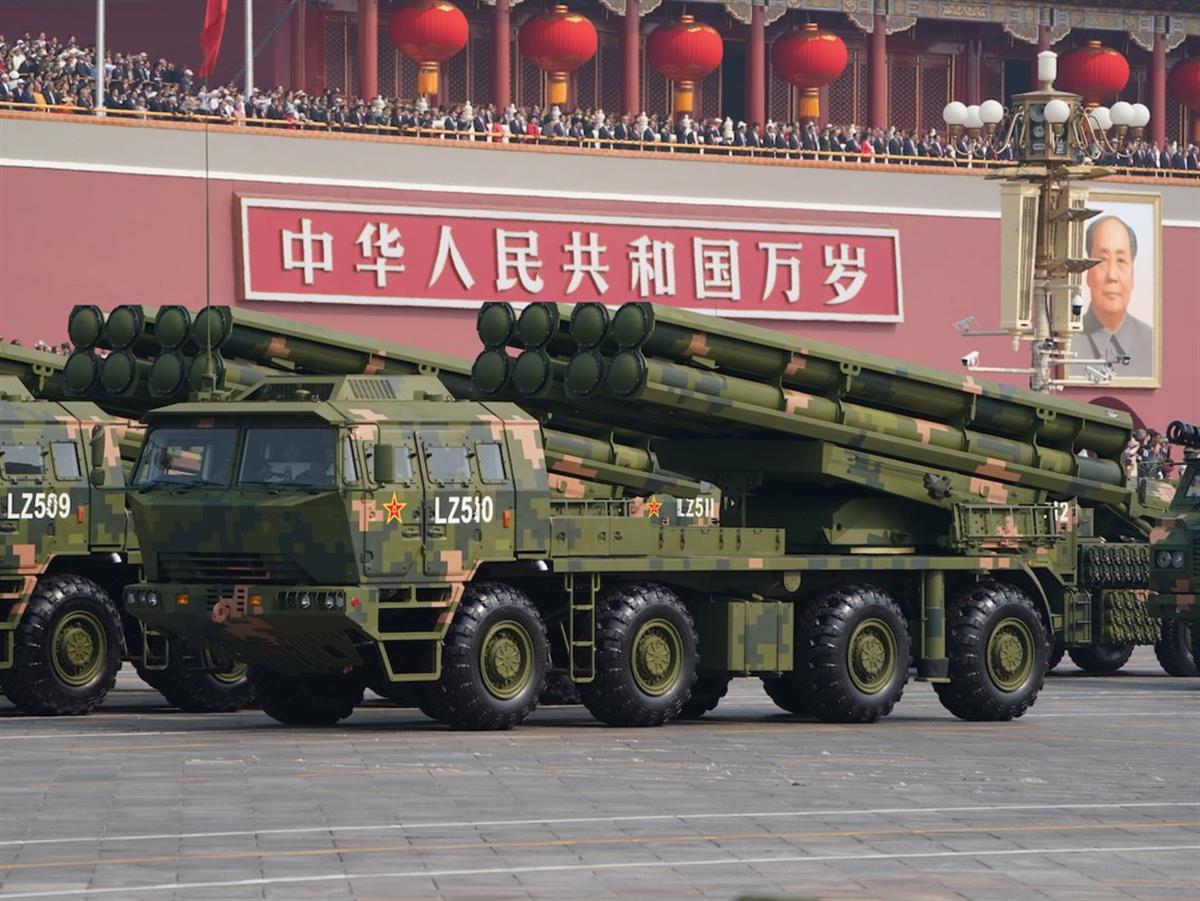The 16th round of Corp Commander level talks between India and China on 17 July remained inconclusive. As both sides resolved to work together, Beijing tested an advanced Multiple Launch Rocket System (MLRS) that could hit critical Indian military bases.
Flanker In Flames! Yet Another Russia’s Most Powerful Dogfighter – Su-35 Fighter Shot Down Over Ukraine – Kiev Claims
HISTORIC! Aiming To Match F-22, F-35 Jets, South Korea’s KF-21 Fighter Joins The Elite Club Of Indigenous Warplanes
The state television broadcaster CCTV recently revealed that the Chinese military had tested the precision strike capacity of its new MLRS at a high altitude region.
The People’s Liberation Army employed the PCL-191 MLRS, which is placed on a truck, to strike a target several kilometers away at a shooting range in the western desert of China, CCTV reported.
The state television broadcast coincided with the talks between India and China that began on July 17 concerning the various unresolved issues at the border, including the friction points from which Chinese troops are yet to vacate.
Ever since the conflict broke out in 2020, both sides have significantly increased their firepower along the border.

The test could be seen as power projection and aligns with the recent Chinese maneuvers along the LAC.
In the last week of June, a Chinese military aircraft came dangerously close to one of the friction points in the Eastern Ladakh sector. The Chinese military was holding military drills near the region at the time.
S-400 Killer? Ukraine Says Russia’s ‘Billion Dollar’ Defense System Crumbling Against US HIMARS
Further, the Chinese side also engaged in provocative actions along the LAC in the Eastern Ladakh sector over the last week, flying very close to the LAC in violation of the confidence-building measures that forbid both sides from flying closer than 10 km to the LAC.
According to military analysts, the latest demonstration of the MLRS was intended to demonstrate the PLA’s firepower and combat readiness for potential border emergencies.
PLA deploys PCH191 long-range rocket launcher as deterrent to #India. PCL-191 is able to carry eight 370mm rockets, each with a range of 350km, or two 750mm Fire Dragon 480 tactical ballistic missiles, each capable of flying up to 500km. #IndianArmy pic.twitter.com/PUpOB5vJBa
— 彩云香江 (@louischeung_hk) November 6, 2021
The sophisticated, long-range rocket launch system made its public premiere at China’s National Day parade in October 2019. The Chinese side confirmed that the precision-strike long-range MLRS was deployed along the Himalayan border with India in April 2021, as previously reported by EurAsian Times.
The latest test is significant due to the increased range of this Chinese MLRS, which could strike Indian military assets near the disputed border. The fact that it was conducted just before the border talks between the two sides is enough to send alarm bells ringing in New Delhi.
Chinese Power Projection
Termed as a mystery weapon system at the time of its unveiling in 2019, the Type PCL191 rumbled through the streets of Beijing on the back of large trucks with nearly perfect anonymity, in contrast to other military systems on exhibit in Beijing that had their names branded along their flanks.

The system can carry two 750mm Fire Dragon 480 tactical ballistic missiles, each with a range of up to 500km, or eight 370mm (1412 inch) rockets, each with a range of 350km (220 miles), according to the Chinese military journal Modern Ships.
According to Zhou Chenming, a researcher with the Beijing-based Yuan Wang military science and technology think tank, the rocket launch system’s range has been increased to 500 km. As a result, it can strike any Indian military installation along the Line of Actual Control, the de facto border.
“The PCL191 is more capable when it’s deployed at high altitude, with its maximum range having been extended several times,” Zhou said.
5/20
The ASN-207 UAV pinpointed the targets and the PHL-16/PCL191 MLRS attacked the four targets. This MLRS can also fire 300mm rockets. Also, this MLRS just went into service, but they don’t rely on their newer ASN-209 UAV, but in their experienced a& relatively old ASN-207 UAV pic.twitter.com/bmza7mufJP— Jesus Roman (@jesusfroman) November 13, 2021
He added that the MLRS also benefited from the assistance of other Chinese gadgets and radar systems and China’s BeiDou satellite navigation system.
According to the official PLA Daily, the system was operated by an artillery brigade in the Xinjiang military district of the Western Theatre Command in April of last year. The brigade was placed in a region of the Himalayas that is 5,200 meters (17,000 feet) above sea level and close to the Indian border.
Earlier, the rocket system had cast a shadow on the safety of the Taiwan Strait as it was deployed by the PLA’s Eastern Theatre Command in Huzhou, Zhejiang province, and in Xiamen in Fujian, the nearest point on China’s mainland to Taiwan.

They had shown that “the PCL191 brigade could be deployed anywhere in the country, from the coast to the Himalayas, and take on challenges like the border dispute with India, or even a Taiwan contingency”, according to Song Zhongping, a former PLA instructor and military commentator.
After the conflict broke out, China started the deployment of advanced weapons like the Type PHL-03 multiple launch rocket systems (MLRS), which have a firing range of 70 to 130km, and PCL-181 vehicle-mounted howitzers to secure its border near the Indian Territory.
- Contact the author at sakshi.tiwari9555@gmail.com
- Follow EurAsian Times on Google News




